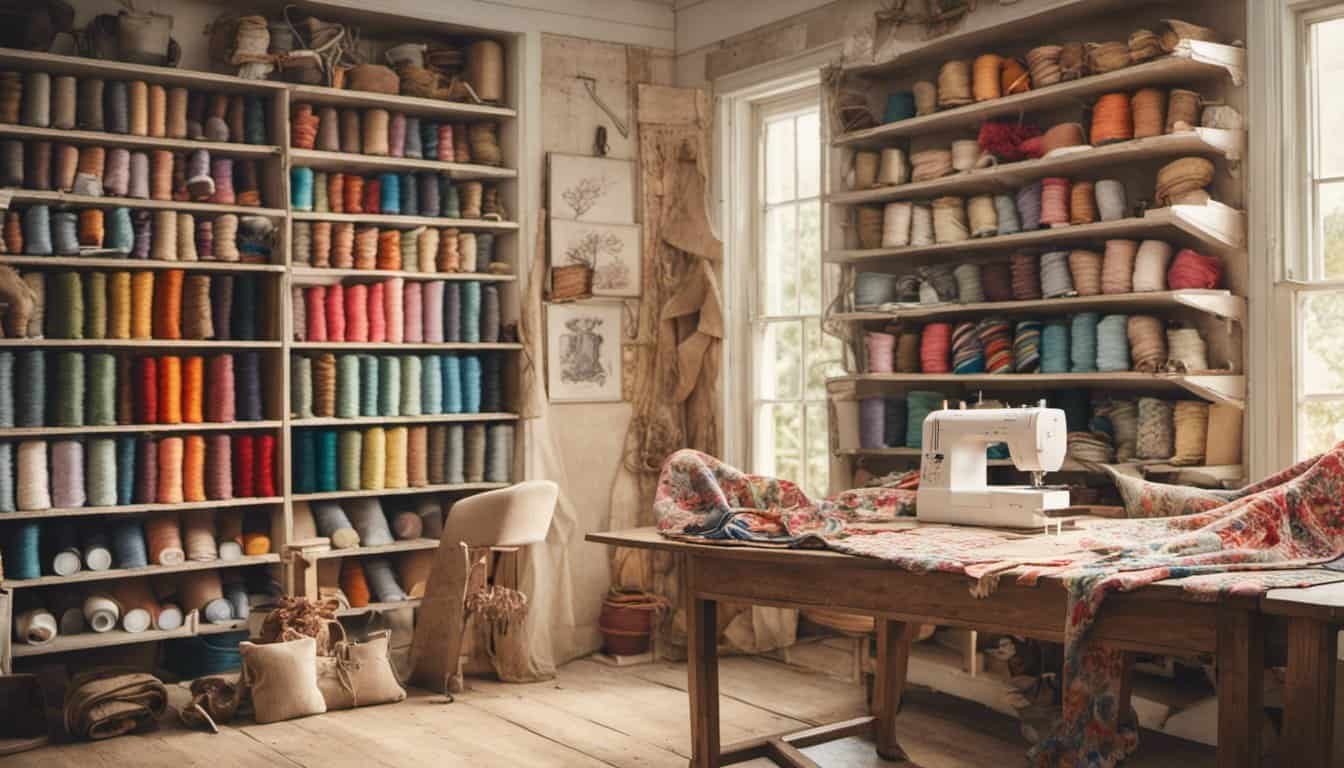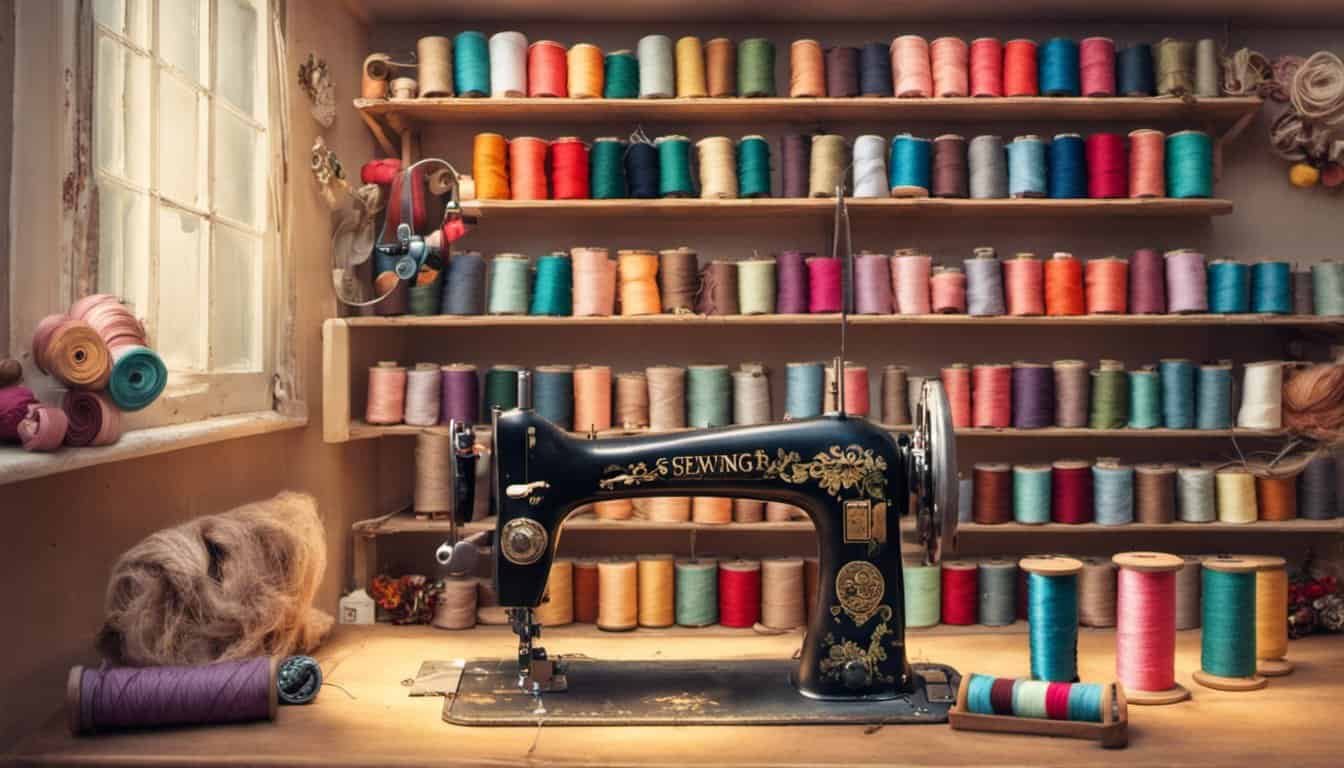Sewing stretch fabrics can feel tricky at first, but you’ve got what it takes to master it. Whether you’re crafting leggings, swimwear, or cozy activewear, understanding how to work with these flexible materials opens up a world of creative possibilities.
With the right techniques and a bit of practice, you’ll sew like a pro in no time. From choosing the perfect fabric to selecting the right stitches, every step brings you closer to flawless, stretchy garments. Let’s dive in and transform your sewing projects with confidence and ease.
Choosing the Right Stretch Fabric
Selecting the right stretch fabric is crucial for achieving professional results in your sewing projects. Here’s how you can make the best choice:
Fabric Composition
Different materials offer varying levels of stretch and comfort:
- Cotton-Spandex Blends: Combine breathability with flexibility, perfect for t-shirts and casual wear.
- Jersey Knit: Soft and highly stretchy, ideal for leggings and activewear.
- Elastane Fabrics: Provide maximum elasticity, suitable for swimwear and compression garments.
- Lycra: Known for its superior stretch and recovery, great for form-fitting outfits.
Stretch Level
Determine the amount of stretch needed for your project:
- Low Stretch (2-4%): Best for structured garments like tailored pants.
- Medium Stretch (5-10%): Suitable for everyday wear and casual clothing.
- High Stretch (10-20%): Perfect for activewear and form-fitting items.
Fabric Weight
Choose the appropriate weight based on the garment type:
- Lightweight: Ideal for swimwear and lingerie.
- Medium Weight: Suitable for activewear and casual clothing.
- Heavyweight: Used for durable items like fitted jackets.
Fabric Pre-Washing
Prevent shrinkage and color bleeding by pre-washing your fabric:
- Method: Use cold water and a gentle cycle.
- Drying: Air dry or use low heat settings to maintain fabric integrity.
Drapability and Care
Consider how the fabric drapes and its maintenance requirements:
- Drapability: Affects the flow and movement of the garment.
- Care Instructions: Ensure the fabric is easy to maintain and fits your lifestyle.
Example Stretch Fabrics
| Fabric Type | Composition | Stretch Level | Best For |
|---|---|---|---|
| Cotton-Spandex Blend | 95% Cotton, 5% Spandex | Medium | T-shirts, casual wear |
| Jersey Knit | Varies (often cotton/polyester with elastane) | High | Leggings, activewear |
| Elastane | 100% Elastane or blended | High | Swimwear, compression garments |
| Lycra | 100% Lycra or blended | High | Form-fitting outfits |
By considering these factors, you can choose the perfect stretch fabric to ensure your sewing projects turn out like a pro.
Essential Tools and Materials
To sew stretch fabrics successfully, equip yourself with the right tools and materials. These essentials ensure smooth handling and professional finishes.
Selecting the Right Thread
Choose a thread that complements your stretch fabric’s elasticity. Polyester or nylon threads offer strength and flexibility. For example, a 50-weight polyester thread works well for jerseys and knit fabrics. Avoid cotton threads, as they lack stretch and can break.
Appropriate Needles
Use stretch or ballpoint needles designed for stretch fabrics. These needles prevent snags and runs with their rounded tips. Select the right size based on your fabric type.
| Needle Type | Recommended Sizes | Best For |
|---|---|---|
| Ballpoint | 70/10, 80/12 | Lightweight to medium-weight |
| Stretch | 75/11, 80/12 | Heavier stretch materials |
Ensure your needle matches your fabric to achieve clean, even stitches.
Preparing Your Fabric
Preparing your fabric correctly ensures smooth sewing and professional results. Follow these steps to get your stretch fabric ready.

Pre-Washing and Ironing
Pre-washing stabilizes your fabric and prevents future shrinkage. Wash your fabric according to the manufacturer’s instructions, using cold water and a gentle cycle. After washing, iron the fabric on a low heat setting with a pressing cloth to avoid damage. This process removes wrinkles and sets the fabric fibers, making it easier to work with.
Cutting with Care
Accurate cutting enhances the fit and appearance of your project. Lay your fabric on a flat surface, ensuring it’s smooth and wrinkle-free. Use sharp scissors or rotary cutters for clean edges. Pin your pattern pieces securely to prevent shifting, and consider using pattern weights for finer accuracy. Cutting stretch fabrics precisely helps maintain their elasticity and ensures pieces align correctly during assembly.
Techniques for Sewing Stretch Fabrics
Mastering specific techniques ensures your stretch fabric projects turn out professionally. Apply these methods to enhance your sewing results.
Using Stretch Stitches
Utilize stretch stitches to accommodate fabric elasticity. Opt for zigzag or narrow overlock stitches, minimizing seam puckering and enhancing flexibility. Adjust stitch width and length based on fabric type and project requirements. Test stitch settings on scrap material to achieve optimal tension and appearance.
Seam Finishes
Choose appropriate seam finishes to maintain fabric integrity and stretchability. Employ serged seams or French seams for durability and clean edges. Alternatively, use flat-felled seams for added strength in high-stress areas like activewear. Press seams regularly to ensure they lie flat and retain their shape during wear and washing.
Finishing Touches
« Discover the Top Secrets on How to Find Vintage Sewing Manuals Today
How to Adjust a Too-Tight Garment: 7 Easy DIY Tips You Need to Try »
Finalizing your stretch fabric project involves several key steps to ensure a professional look and durability. Follow these steps to complete your sewing project effectively:
Hemming
- Fold and Press: Fold the hem edge inward by ¼ inch and press with an iron on low heat to maintain stretch.
- Stretch Stitches: Use a narrow zigzag or stretch stitch to secure the hem, accommodating fabric elasticity.
- Even Length: Measure and mark hem length accurately to ensure consistency across all sides.
Seam Finishing
- Overlock Edges: Trim excess fabric and overlock or serge seam edges to prevent fraying and maintain seam strength.
- Reinforce Stress Points: Add extra stitching at areas prone to stretching, such as cuffs and waistbands, to enhance durability.
Pressing
- Low Heat Setting: Use a steam iron on a low heat setting to press seams and hems without damaging the fabric.
- Press Seams Flat: Ensure all seams lie flat by pressing them open or to one side, as appropriate for the garment.
Final Inspection
- Check for Puckers: Inspect all seams and hems for puckering; if present, adjust tension and stitch settings as needed.
- Fit and Comfort: Try on the garment to assess fit and comfort, making adjustments to patterns or seams if necessary.
Optional Embellishments
- Add Trim: Incorporate elastic trims or piping to enhance the garment’s appearance and functionality.
- Decorative Stitches: Use decorative stretch stitches to add visual interest without compromising fabric elasticity.
Care Instructions
- Label Attachment: Sew care labels to inform users about proper washing and handling.
- Seam Reinforcement: Reinforce critical seams to withstand repeated stretching and washing.
By meticulously applying these finishing touches, your stretch fabric project achieves a polished, professional finish that ensures both appearance and longevity.
Common Mistakes to Avoid
Avoiding common errors can significantly improve your experience sewing stretch fabrics. Here are key mistakes to watch out for:
- Using the Wrong Needle Type
Selecting an inappropriate needle can cause snags and uneven stitches. Always use stretch or ballpoint needles designed for knit fabrics to ensure smooth stitching and prevent fabric damage.
- Choosing Inadequate Thread
Cotton threads lack the flexibility needed for stretch fabrics. Opt for polyester or nylon threads, which offer the necessary strength and elasticity to accommodate fabric movement without breaking.

- Skipping Pre-Washing
Neglecting to pre-wash your fabric can lead to unexpected shrinkage or color changes after your project is complete. Always follow the manufacturer’s instructions for washing to maintain fabric integrity and fit.
- Not Stretching the Fabric While Sewing
Failing to apply gentle tension can result in puckered seams. Use a stretch stitch and gently stretch the fabric as you sew to allow the seams to move with the material, ensuring a smooth finish.
- Using Incorrect Stitch Types
Straight stitches can restrict fabric movement, causing seams to break or distort. Instead, use zigzag or narrow overlock stitches that provide the necessary flexibility for stretch fabrics.
- Poor Cutting Techniques
Cutting fabric inaccurately can affect the garment’s fit and elasticity. Lay your fabric flat, use sharp scissors or rotary cutters, and pin pattern pieces securely to maintain alignment and prevent stretching during cutting.
- Ignoring Seam Finishes
Unfinished seams can fray and weaken over time. Implement proper seam finishes like serged seams, French seams, or flat-felled seams to enhance durability and maintain a clean appearance.

- Overloading the Sewing Machine
Adding too many layers or using excessive tension can strain your machine and distort the fabric. Work with one or two layers at a time and adjust tension settings to match your fabric’s requirements.
- Inadequate Pressing
Skipping pressing or using improper heat settings can distort stretch fabrics. Press seams with a low heat setting, using a pressing cloth if necessary, to keep seams flat without compromising fabric elasticity.
- Ignoring Fabric Composition
Different stretch fabrics require tailored approaches. Understand your fabric’s composition, such as cotton-spandex blends or jersey knit, to choose the right needles, threads, and sewing techniques for optimal results.
By being mindful of these common mistakes, you can enhance the quality and durability of your stretch fabric projects, achieving professional-looking results every time.
Conclusion
Sewing stretch fabrics can feel challenging at first but with the right approach you’ll soon create pieces that fit perfectly and move with you. Embrace the flexibility of these materials and enjoy the creative process.

Keep experimenting with different techniques and don’t be afraid to make mistakes each project is a step closer to mastering the art. Before you know it you’ll be sewing stretch fabrics like a pro and bringing your unique designs to life.

















